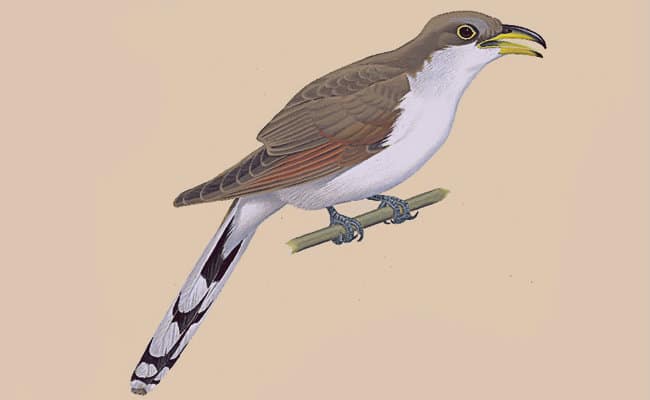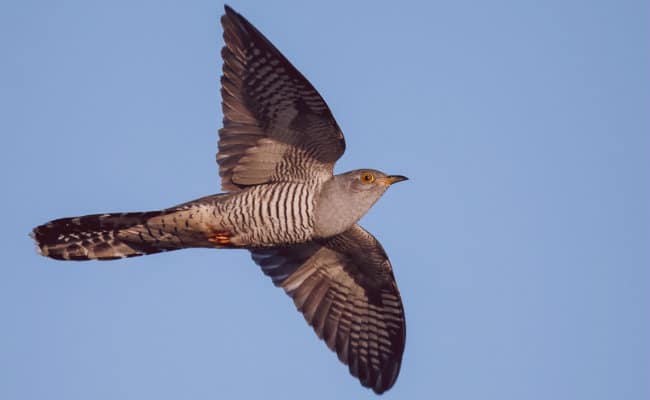In the world there are various species of birds, all of which make up a large part of the global fauna. These vertebrate animals walk, jump or fly depending on their habitat, food and possible predators.
? What is the cuckoo bird?
The birds are covered with feathers to facilitate movement through the flight, also the beak is a key part for the effective feeding of the bird, it does not have teeth. By virtue of the great importance that birds have for the coexistence of other species, we have dedicated an article in particular to the cuckoo bird, so that you can learn about the characteristics of this bird, what is its habitat and behaviors of the species, also so that you have a bird to compare with the rest.
The term "cuckoo" comes from the sounds that the bird makes to communicate with the flock, express needs or defend itself from a predator.

? Characteristics
It has a size of approximately 25 cm, the male differs from the female by the slight changes in the tones of its plumage, in the upper part it has colors between copper and greyish brown and in the lower part of its body it is light gray tones . The female, for her part, has reddish tones within the gray range of her feathers.
? Bird intelligence
He is remarkably intelligent, the female for example, does not build a nest for its chicks rather it invades the nest of other birds.
After the chick hatches, they are fed and cared for by parents of different species since their mother abandons them in different nests scattered in many places.
⚙ Customs
It is known that they go through long migration processes, usually the cuckoo bird lives in cold areas of Europe, so it goes a long way to Africa to get warmer places.
As we mentioned earlier, the female cuckoo lays her eggs in the nests of other birds so that they raise the chick, and if the female has two chicks, they are deposited in different nests; This procedure is known as a parasitic habit of the bird. It is necessary to emphasize that the behavior of the species is linked to its own instinct, that is, that the bird cannot be attributed human characters of independence and detachment towards its young.
On the other hand, the "cú-coús" that they sing are strongly related to the communicative needs of the species linked to a relatively high intelligence.
In the same vein, farmers like the presence of the cuckoo near their crops, thanks to the ability of the bird to exterminate pests that threaten the economy and livelihood of the farmer.
Threats of the species
Any much larger and predatory bird can become a deadly threat to the cuckoo, especially in habitats shared with eagles or vultures.
Also the presence of some foxes, weasels, and lynches can be a threat to the species.
In other instances, the same human being may maintain violent behaviors towards the cuckoo, since he may come to think that the bird is invading his place of residence when it is in search of food, which are the same pests that affect man.
Thanks to this, it is necessary for the individual to become familiar with the different species of birds and their feeding method.
Today, the bird needs the help of the inhabitants adjacent to its habitat since the threats of man to the species are becoming stronger.
There are various factors that influence it, such as the cutting down of trees or the definitive elimination of the bird by feeding on insects that reside in crops and fields belonging to man.

? How does the cuckoo bird feed?
Their diet is mainly herbivorous, then they consume insects and other parasites that are a source of protein for their body, the common reflex of the bird is to open its beak to be fed by its parents, in this case adoptive, who regurgitate at the beak of the young so that it has a better digestion of food.
Dragonflies, butterflies, spiders, moths, flies, other insects and caterpillars are the cuckoo bird favorite foods; For their part, tree frogs are within the bird's food pyramid as well as the eggs of smaller birds that are vulnerable, but this behavior is typical of the violent adult male.
It is recommended that you investigate the different methods of support for the species in your community, if they are non-existent, you can start by getting the message across on your own.
Localities like the United States, have protected the life of the bird with restrictions imposed on its inhabitants, for example, the prohibition of hunting in places where the cuckoo resides.
? What is its habitat?
Wooded environments, temperate or tropical regions, the truth is that the species has some adaptation to the climatic conditions of the environment, however, the ability to withstand very low temperatures is limiting, so they decide to migrate to warmer places in the winter seasons .
The cuckoo likes trees with dry leaves where it is easy to camouflage with their plumage, they usually look for hollow places to stay in them for long periods of time.
? How does it reproduce?
The male must court the female by bringing her all kinds of leaves and food for her to accept. After long attempts, the male can gain access to the female's reproductive stage.
Then when the incubation period of the female begins, she hides among the trees in search of another nest to lay her eggs. Observe from afar the females of other species as they build their nests and intelligently decide who will be the adoptive parents of their children.
Wait for the other female to lay her eggs in her own nest and go in search of food, and then the female cuckoo invades the nest; what he proceeds to do is drop one of the other female's eggs to the ground so that she does not notice the change she made in her nest.
Later, she lays her egg and leaves, leaving it in the nest of a foster mother.
The irony of all this is not only the mother's behavior, but that of the chick itself, which after approximately 10 days of its birth, throws its adoptive mother's own chicks to be the only one to feed and care for.